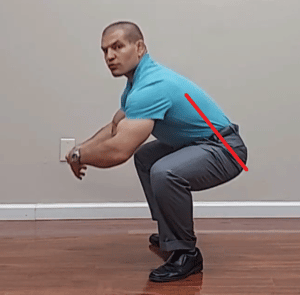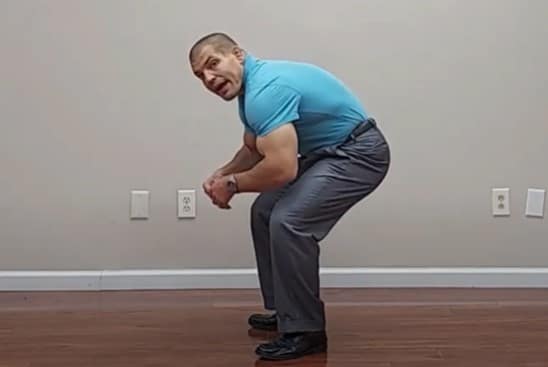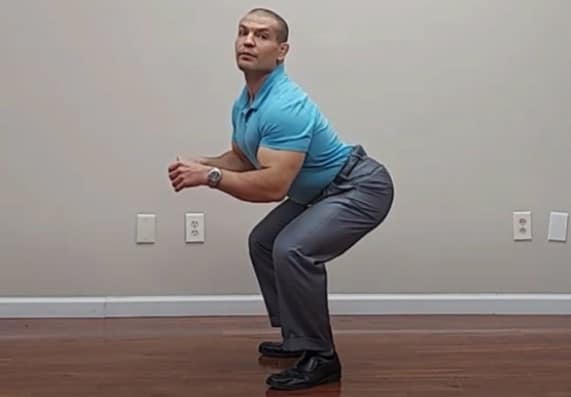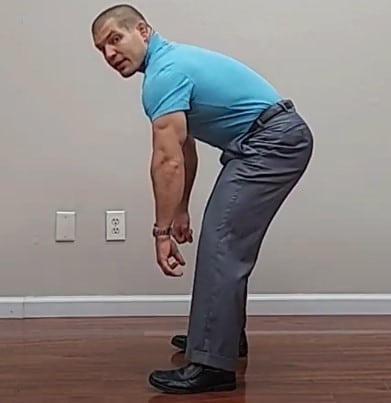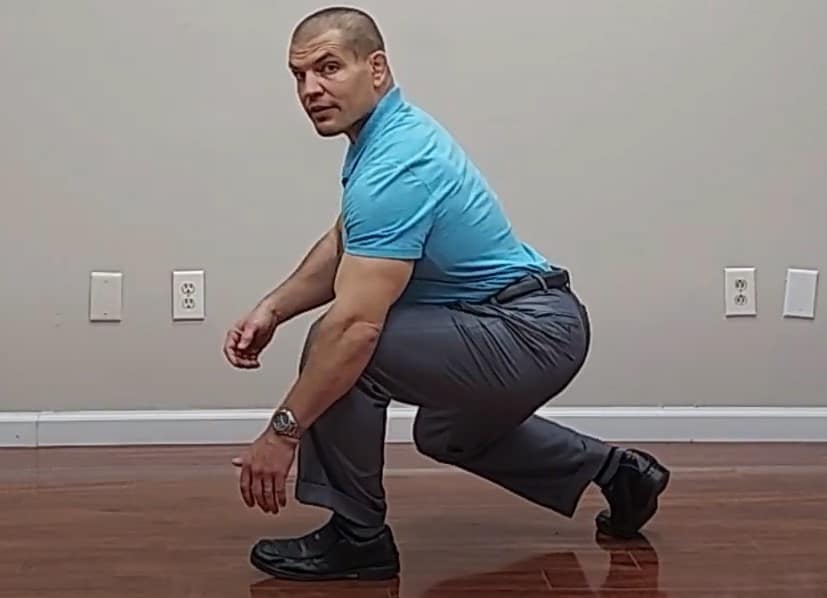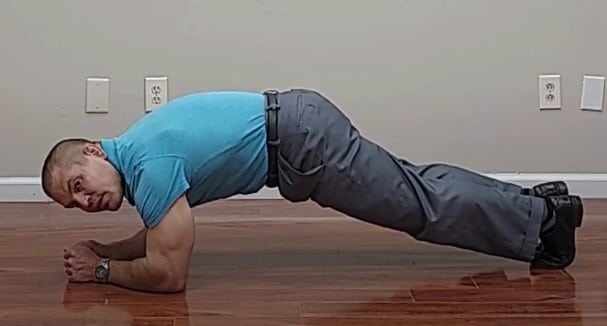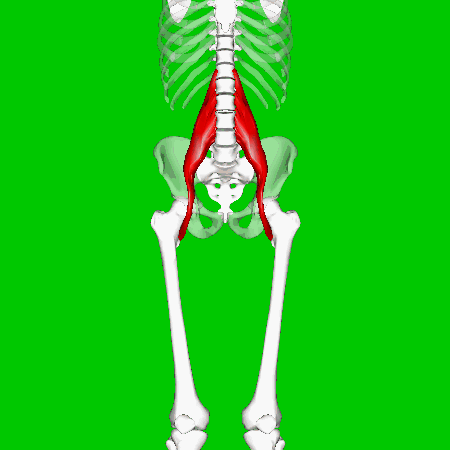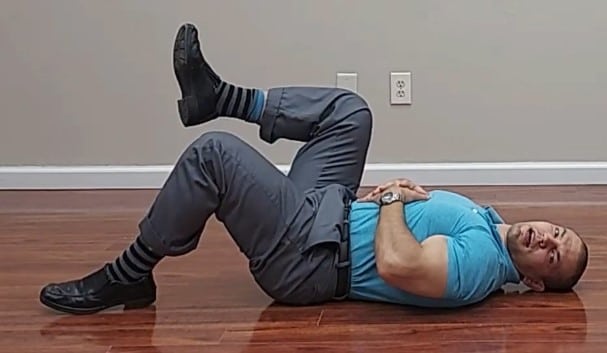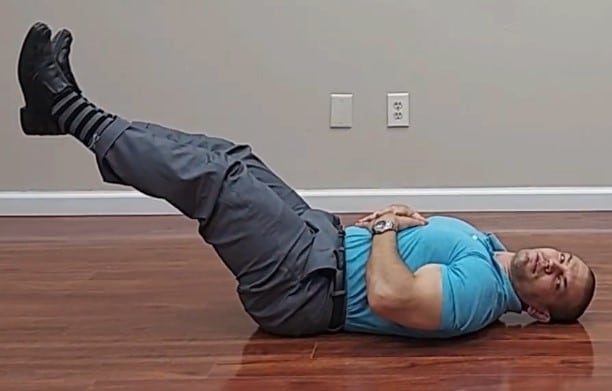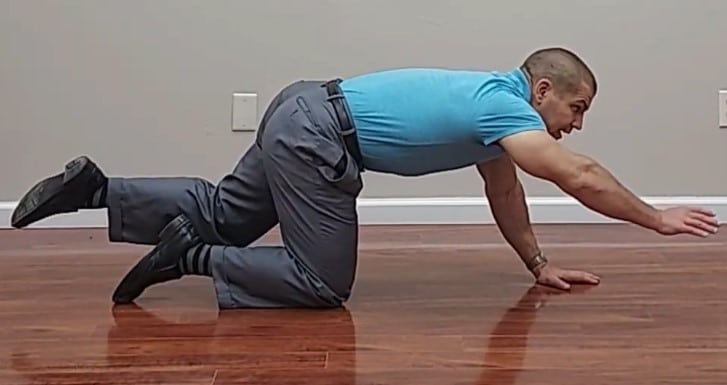Is Core Strengthening Good For Lower Back Pain?
In general, core strengthening IS good for lower back pain. However, some core strengthening exercises are better than others.
Watch the video to learn the 7 best core strengthening exercises for lower back pain, plus what's even MORE important than cores strengthening if you want to keep your lower back from hurting.
Core Strengthening For Lower Back Pain
Today we’ll be discussing the effects of core strengthening on lower back pain including:
- Is core strengthening good for lower-back pain or worth my time?
- How does my core strength affect day-to-day activities?
- What are the best core strengthening exercises?
- What common mistakes do people make when doing core strengthening exercises?
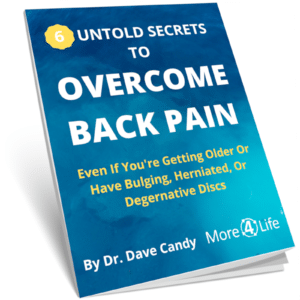
Why Is Core Strengthening Good For Lower Back Pain?
Your core is made up of your hip, stomach, lower back, and glute muscles, which all work together to stabilize your trunk or your upper body.
Overall, the core muscles run up from your pelvis, to about the bottom of the rib cage.
You use your core muscles to stabilize your spine as you move around and do your day-to-day activities.
How much core strength do you need?
Typically, you only use about 20% of your core strength in day-to-day activities. This means your core doesn't have to be super strong, you just need to be able to adequately stabilize your upper body.
3 Everyday Core Strengthening Exercises
What are the best core strengthening exercises?
These first three exercises are some of the best, because they replicate day-to-day movements. This means they'll be the most likely to help you stay free from lower back pin in every day life.
1. Squats
Squats are a great core strengthening exercise, especially because they help strengthen your glute (butt) and leg muscles while using your core muscles to stabilize your lower back.
However, it's important to use correct technique when squatting in order to strengthen your core and prevent lower back pain.
How To Squat Correctly:
- Start by standing with your lower back in a neutral position.
- Next, push your hips backward while keeping your lower back straight.
- You should NOT stay upright. Head and shoulders should move foward while your hips move backward in order to keep your weight balanced over your feet.
- Squat as deeply as you feel comfortable going, keeping your spine neutral and your weight more on your heels than your toes.
- To return to standing, push your hips forward and roll your pelvis back underneath of you.
If you're doing squats correctly, you should feel the exercise in your thighs, glutes (butt), and abdominal muscles.
You should NOT have back pain when squatting.
Common Mistakes When Squatting
The first thing to avoid when squatting is rounding-out your back by leaning forward too much, as shown below. Rounding your back too much when squatting creates increased disc pressure, which can lead to herniated discs.
The second thing to avoid is arching your back backwards too much, as shown in the image below.
This can lead to compressing the joints in your your spine too much as well as over-exerting the lower back extensor muscles.
Both of these issues can lead to lower back pain.
2. Deadlifts
Deadlifts are also a great core strengthening exercise, similar to squats, but they focus more on the glutes and hamstrings and less on the quadriceps.
They're also a surprisingly good exercise for your abdominal muscles if you do them correctly.
When deadlifting, make sure to follow the same rule of keeping a neutral spine, as you would while performing squats.
How to perform deadlifts correctly:
- Start by bending down to the ground by pushing your hips back. This is extremely important as it will affect the rest of the exercise!
- Grab the weight or object that you're going to lift and pull it close to you.
- Keep your weight back on your heels, almost so much that if you weren't holding the weight in front of you, that you'd start to fall backwards.
- When you start to stand back up, squeeze your glute (butt) and abdominal muscles, and push your heels down into the floor.
- Come back up to standing using your glutes and abs, NOT your back extensor muscles.
- When lowering the weight back to the ground, lower it fairly fast. If you lower the weight slowly, it takes a lot of lower back extensor force to fight gravity. This in turn can create compression on your lower back discs and facet joints, as well as put you at risk for a back muscle strain.
Repeat the steps above for the desired number of repetitions.
3. Lunges
Lunges are also a great core strengthening exercise to create side-to-side stability.
When doing lunges, make sure to keep your front knee aligned directly over your foot, keeping your weight on your heel. 80-90% of your weight should be on your front foot when doing a lunge and only 10-20% on the back leg
By using proper technique when doing lunges, you can build glute strength in both the front-to-back, as well as side-to-side planes.
Need Help For Lower Back Pain?
Tap the button below to request a Back Pain Discovery Visit with one of our specialists to discover how we can help.
The 4 Best "Traditional" Core Strengthening Exercises
If you came to this page looking for "traditional" core strengthening exercises - like ones where you get down on the ground like you'd do at the gym or in a Pilates class - these exercises may be more what you're looking for.
Now, I still maintain that the 3 exercise mentioned above are better core strengthening exercise for preventing lower back pain.
After all, it's not every day that you do a sit-up, plank, or crunch type of movement. However, these do help to strengthen your core and increase your capacity to perform heavier tasks, such as lifting and carrying heavy things, such as a 40-pound bag of dog food or carrying a 40-pound bag of mulch.
But then again, squatting, deadlifting or lunging with weights are still probably better ways to build strength for these heavier tasks.
But I digess...
(step off soap box)
Here are the 4 best traditional core strengthening exercises
4. Planks
Planks are by far one of the best "traditional" core strengthening exercises.
Why?
A plank isometrically trains your core to better-stabilize your trunk. The word "isometric" means that you’re keeping your muscles still while contracting them (iso- = "same", metric = "measure"). In othere words, your muscles aren't shortening (concentric) or lengthening (eccentric), they're staying the same length.
First, lay across the floor, with your arms holding yourself up, bent at a 90 degree angle.
This movement should put your body weight on the ends of your feet and toes, as well as on your forearms in front of you.
If you need to modify the movement, set your knees on the floor to make it easier on your core. Eventually though, you can work toward doing a full floor plank from your forearms to your toes.
Don't focus on making a completely straight line with your body, as this can hyperextend your lower back. It's more important to have a neutral spine than it is to have your body in a completely straight line. by flexi
If you have tight hip flexors, this may mean that your butt will stick up in the air some, and that's OK.
Focus on keeping your abdominal muscles tight with your lower back straight - not sagging down or arching up.
5. Crunches
Typical sit-ups are bad for your back.
Yet they're one of the first exercise many people think of when they think of core strengthening exercises.
Why?
Well it's not based on science. You can probably blame your high school gym teacher.
But they didn't know any better. Sit-ups were once thought to be one of the best core strengthening exercises.
Why are sit-ups bad for your back?
Sit-ups use your hip flexor muscles (primarily the iliopsaos) more than they do your abdominal muscles.
The psoas portion of the iliopsoas attaches to the lumbar spine as shown above. Sit-ups overactivate the psoas and can create tremendous amounts of compressive force on your lower back.
That's BAD if you have bulging, herniated, or degenerative discs in your lower back!
Your abdominal muscle on the other hand, run from your sternum and lower ribs to your pelvis.
Compared to the full-range-of-motion sit-ups, crunches mostly focus on strengthening your abdominal muscles, not your hip flexors.
Here's how to do crunches correctly:
When doing crunches, focus more on pulling your sternum to your pelvis, or your rib cage towards your hips.
Both the rectus abdominis and oblique abdominal muscles are important in having a strengthening your core, and doing crunches correctly can help you strengthen both of these muscle groups.
Doing crunches in a straight path will focus more on your recutus abdominis muscles, while twisting your upper-body to the left or to the right will focus more on your oblique abdominal muscles.
6. Leg Raises
Leg raises are a great core strengthening exercise for targeting the lower abdominals.
Weak lower abdominals are common in people with lower back pain.
However, straight leg lowering exercises are can be very difficult to do correctly.
Yet they're one of the most common core strengthening exercises.
(Again, blame your high school gym teacher, coach, or personal trainer).
In order to do leg lowering exercises correctly you MUST keep your lower back flat on the floor throughout the entire exercise.
You can do this by keeping your abdomial muscles tense as your raise and lower your legs.
If you have weak lower abdominals, here's a modification to make the exercise easier:
Bent Knee Leg Raises
- Lie flat on your back with your knees bent.
- Start by raising one leg at a time, keeping the knee bent and keeping your lower back flat on the ground.
- Lower the leg, while still keeping your lower back flat.
- Alternate lifting legs one at a time until you can perform 10 repetitions with proper technique.
Then progress to lifting BOTH legs with bent knees. When you can do this successfully, then progress to straight leg raises.
7. Bird Dogs
Bird dogs are good exercise for training your lower back muscles. These a very important part of your core, so it's important that you do this movement properly.
In general, people with chronic back pain tend to overuse their lower back muscles, not under-use them.
When doing bird dogs, face the ground and place your weight on your hands and knees.
Then, raise your opposite arm and leg at the same time, and alternate with the other arm and leg.
It’s important to keep a neutral spine position during this movement as always, and keep a stable spine (not twisting or leaning side-to-side).
This may limit your full range of motion, but if your goal is to strengthen your core, then you won't need to worry about achieving the full movement.
What's More Important Than Core Strengthening In Order To Prevent Lower Back Pain?
Something that's even more important than doing core strengthening, is how you utilize your core muscles in everyday life.
Even if you do core strengthening exercises for an hour per day (which I'm guessing you don't), there are still 23 other hours in the day.
What you do during those other 23 hours is MUCH more important than what you do in the 1 hour, 1/2 hour, or 1/4 hour that you're doing core strengthening.
For example:
- How you stand
- How you sit in a chair or on the couch
- How you stand up from sitting
- How you sleep at night
If you can keep your spine in a neutral position doing these things, you're much less likely to develop chronic lower back pain. .
Here at More 4 Life, we believe in helping you stay active, mobile & healthy in your everyday life without back pain.
Need Help For Lower Back Pain?
Request a Back Pain Discovery Visit with one of our specialists to discover how we can help.
Like this post? Here are a few others you may enjoy:
Best Leg Strengthening Exercise For Seniors
Best Glute Strength Exercise Ever
3 Best Balance Exercises For Seniors To Improve Balance At Home



